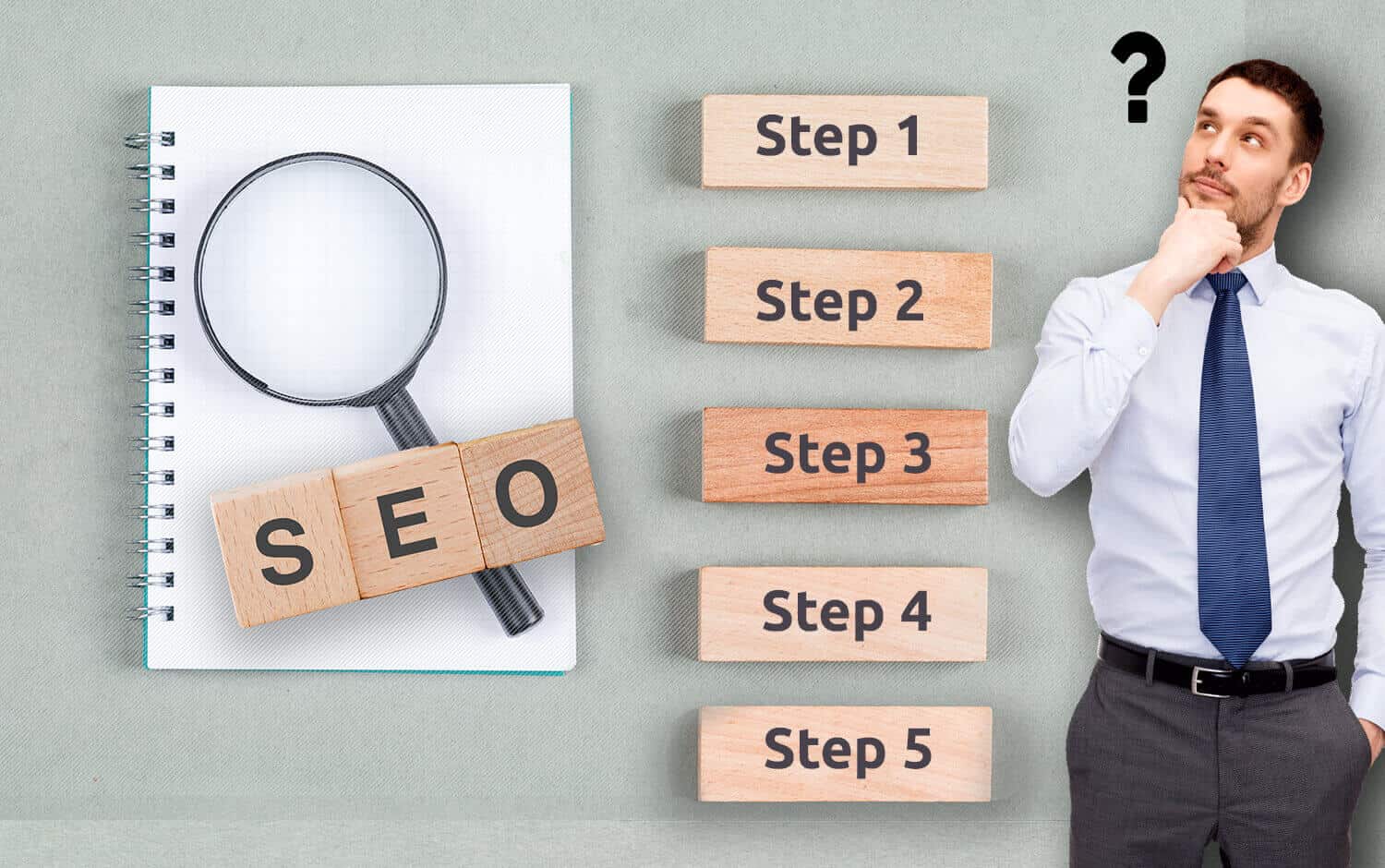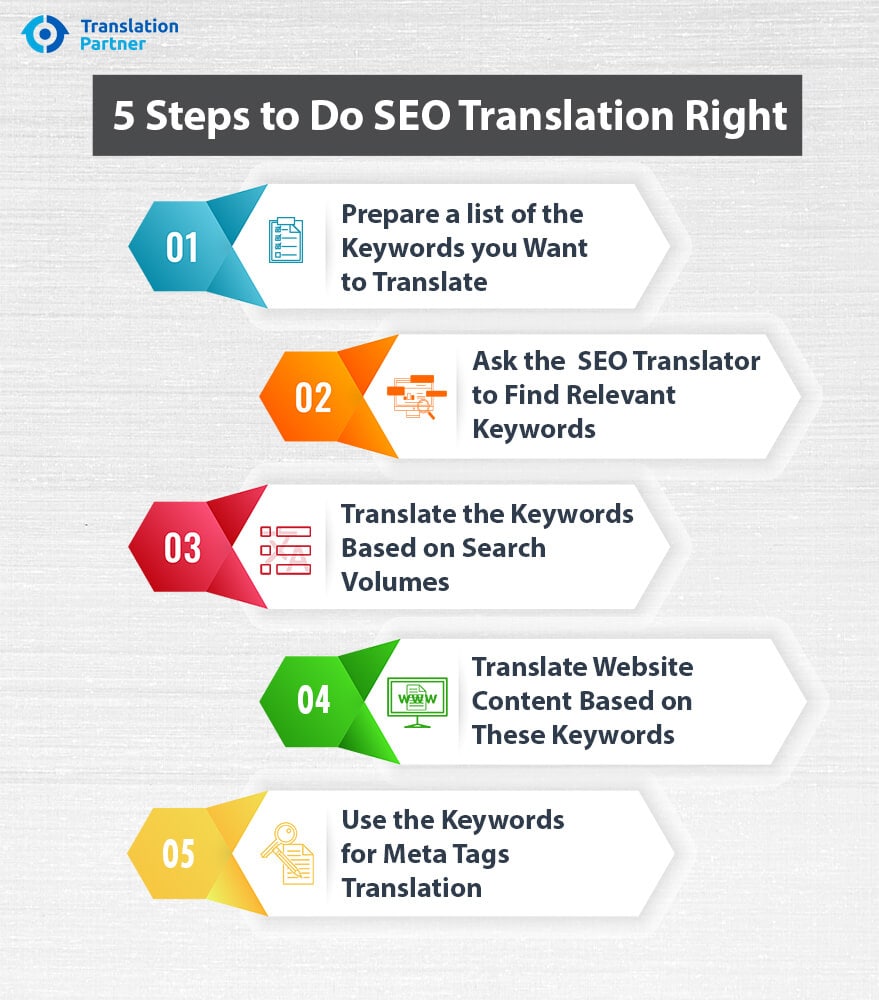How to do SEO Translation In 2024 and dominate the local search engines results.

One of the main reasons for having a multilingual website is to attract international customers from different countries.
It is not enough to hire a professional website translation company to do the translation of the website content to attract international customers. You have to do this with SEO in mind.
However, many people don’t know what SEO translation is and what it takes to do it correctly.
Yes, it is very smart to have a drop-down list with the different languages of your website, but this will not attract people who search Google and other search engines looking for products and services your company sells.
You need to optimize the multilingual website for SEO the same way you do with your main website.
Is SEO Localization different from SEO Translation?
While people use these terms as if they refer to the same process, I prefer to use the term “SEO Localization”. The process of localization goes beyond just translating text into another language. It involves adapting the user experience as a whole to match the visitors of the target countries. This involves changing images, optimizing the checkout forms, optimizing the website display direction, and of course translating the keywords the right way. As you see ” SEO Localization” goes beyond “SEO Translation”.
But What is Meant by SEO Translation?
SEO-friendly translation means optimizing the translation of your website content to help it rank well in local searches when potential customers search online for the products and services of your company inside their countries.
To do this correctly, you need to follow the same SEO steps of the original website while working on the different translated versions of the website.
This is about searching for relevant keywords and using these keywords to translate the website content, such as pages, articles, product pages, and meta tags.
Sometimes it is referred to as “SEO Localization”, which I will use here as well.
But How Is It Different from International SEO?
SEO translation is a part of the larger international SEO strategy you have for your website.
International SEO takes care of staff like setting the right URL structure, submitting the website sitemap to the target search engines, for example, Baidu in China, setting up the interlinks of the translated copy of the website, and other holistic SEO tactics.
SEO localization is only about adapting the multilingual website content for search engines of the target counties.
Can ChatGPT do SEO Translation? Here is its answer:
As an AI language model, I can generate translations from one language to another. However, SEO translation involves more than just translating keywords and phrases. It also requires an understanding of the target market and their search behavior, as well as knowledge of SEO best practices.
While I can assist with translating content for SEO purposes, it’s important to have a human SEO specialist review and optimize the content to ensure it’s fully optimized for the target audience and search engines.
The Multilingual Keywords Research and SEO Translation:
The SEO translation process is the same one you use to find keywords for a multilingual website. The additional part is translating these keywords and using them while translating the website content in an SEO-friendly manner.
To easily explain the multilingual keywords search and translation process, here are the 5 steps you need to follow:
Step 1: Prepare a list of the Keywords you Want to Translate
You need to attract people searching online for the products and services your company is selling. So, start by creating a list of the potential keywords your customers are using online to find these products and services. For example, if you are selling shaving products, you may be using “Shaving Machines for Men”.
Step 2: Implement Multilingual Keyword Research
In this step, you ask the translator to find 2-3 translation options for the keywords you want to target. But you have to be specific here about which country you are targeting. One language can be spoken in different countries, but the same keyword can be translated differently in the same language.
Step 3: Translate the Keywords Based on Search Volumes
Then, ask your translator to translate the source keywords based on the translation options with the highest monthly search option. For example, the keywords “ماكينات الحلاقة” and “آلات الحلاقة” in Arabic are accurate translations of the “shaving devices”. However, the first one has 1900 searches per month, while “آلات الحلاقة” has 200 searches per month. It is better to use the one with a higher search volume.
Step 4: Translate Website Content Based on These Keywords
Now you should have a glossary with the translations of the main keywords you are targeting. This glossary should be the main source for translating all your website content. Ask the translator to use these translations as the basis for translating the pages and posts of your website. If you have an eCommerce website, these keywords should be used for the product description translations.
Step 5: Use the Keywords for Meta Tags Translation
Many people forget about this step. Use your translated keywords for the meta tags of your multilingual website. You have already done the hard part of finding valuable keywords for your website. Ask your translator to give you a custom meta title and a description written for the international customers you are targeting. This will help you rank better in the local searches of Google and other search engines.

The Keywords Translation Software:
There is no specific software you can use to translate the multilingual keywords.
You simply use the same software used in the standard keyword research phase of an SEO optimization project. But you choose the countries you are targeting.
Some of the common tools are Google Keyword Planner, Ahref, SEMRush, and Ubersuggest. Your SEO translator will use these tools to find the best translation options for the list of keywords you have prepared in step 1 above.
The main point here is to choose the country and language locale you are targeting correctly.
For example, if you are doing SEO translation for a website version for Spain, you need to ensure the translator uses the local version of Spanish spoken in Spain, not in Mexico or Argentina.
A multilingual search marketing agency Can’t Do SEO Translation Alone
A multilingual search marketing agency can develop an international SEO strategy and set up the website structure for the target languages. But they can’t do SEO translation on their own. They need a partner who offers SEO translation services.

Also, they can do things like setting up a subfolder or a subdomain for the target languages of the multilingual website, setting the Hreflang link of the translations, and adapting the phone numbers and flags for the different countries you are targeting.
But the marketing agency can’t do the translation part of the SEO unless they outsource it. For this, you need to hire a professional SEO translator or translation agency that knows how the process of SEO translation works.
How to Hire an SEO Translator:
You have to be careful who you choose to do the SEO translation part for your website. Yes, there are many professional translators and translation agencies. But not all of them can do this type of translation.
Here are some characteristics of a professional SEO translator:
Should be a Native Speaker of The Language:
This is a must. You need someone who can expect how your target customers search online. Only native speakers know how to do this. So, never compromise your project by hiring a non-native translator.
Have a Basic Understanding of SEO:
The translator should have a background in the main concepts of SEO. For example, what is meant by keyword research, headings, meta tags, and on-page SEO strategies?
Know How Keyword Research Tools Work:
This is an essential task of the translator. They should be aware of how keyword research tools work, what is meant by search volume, and SEO difficulty score. Also, the translator should know how to review a competitor’s website to find keywords that might help you.
Familiar with Marketing Translation:
Translating your website pages, posts, and meta tags requires a translator who can provide creative translations to help convert website visitors into leads or customers. So, ask your SEO translator about their experience in marketing translation and if they can translate content for PPC campaigns as well.
Conclusion
I hope by now you understand what is meant by SEO translation. It is part of the international SEO process you are running for your multilingual website.
The SEO localization process might look long, but it is worth it. It will help attract the right traffic from search engines, and hence increase the sales of your website.
Find a reliable SEO translator who can work with you and do what you need to succeed in this project. The translator should be a native speaker of the language and be able to use different keyword research tools.
